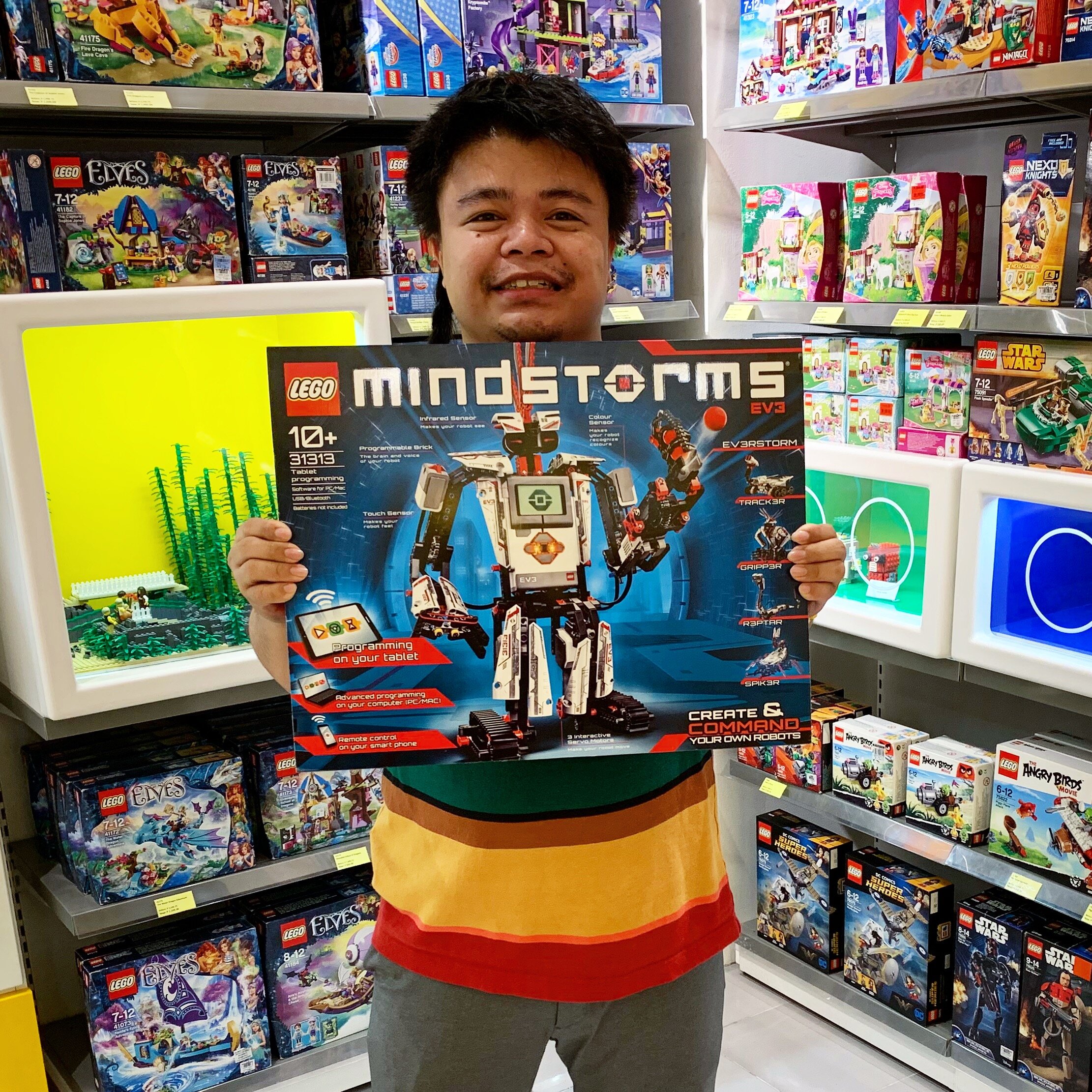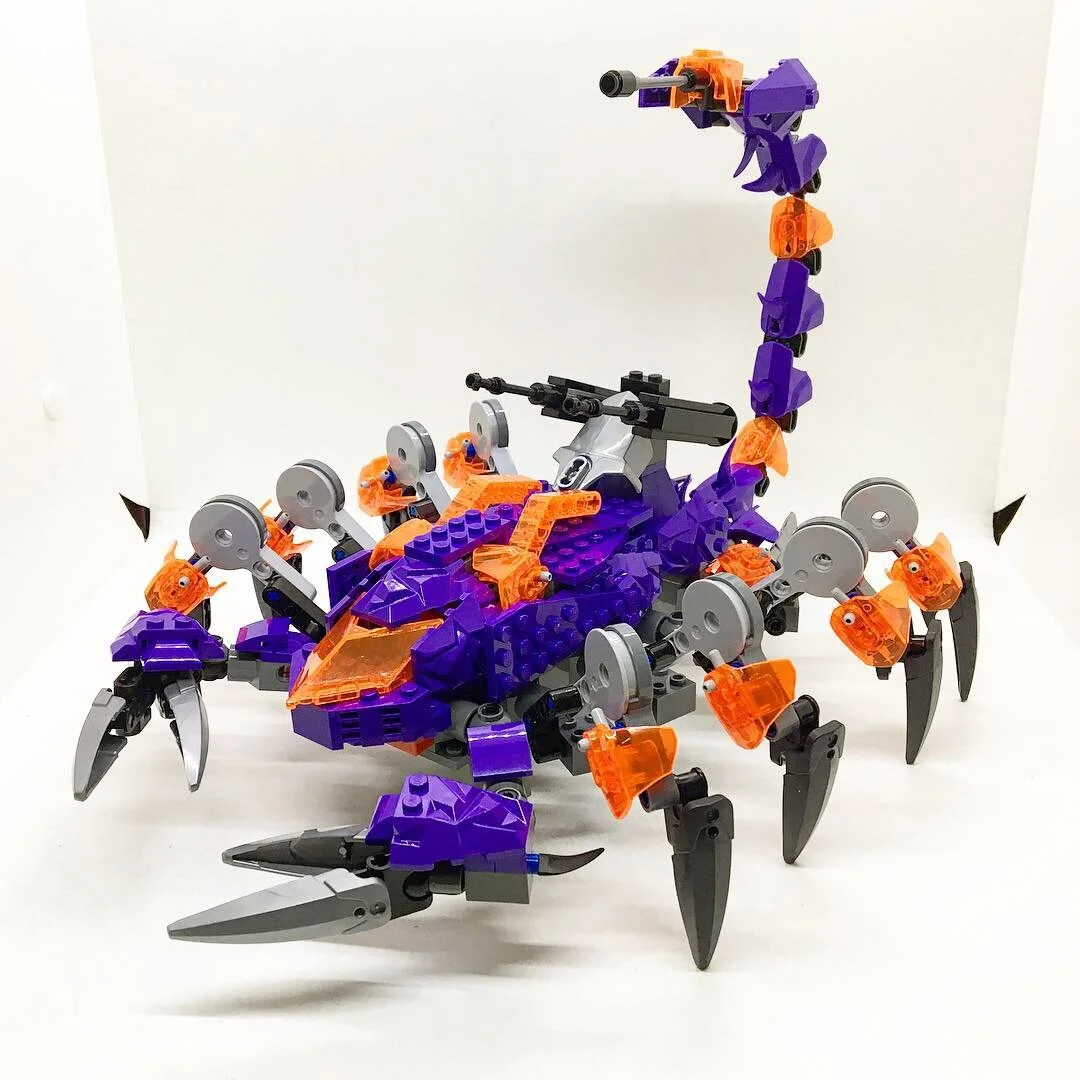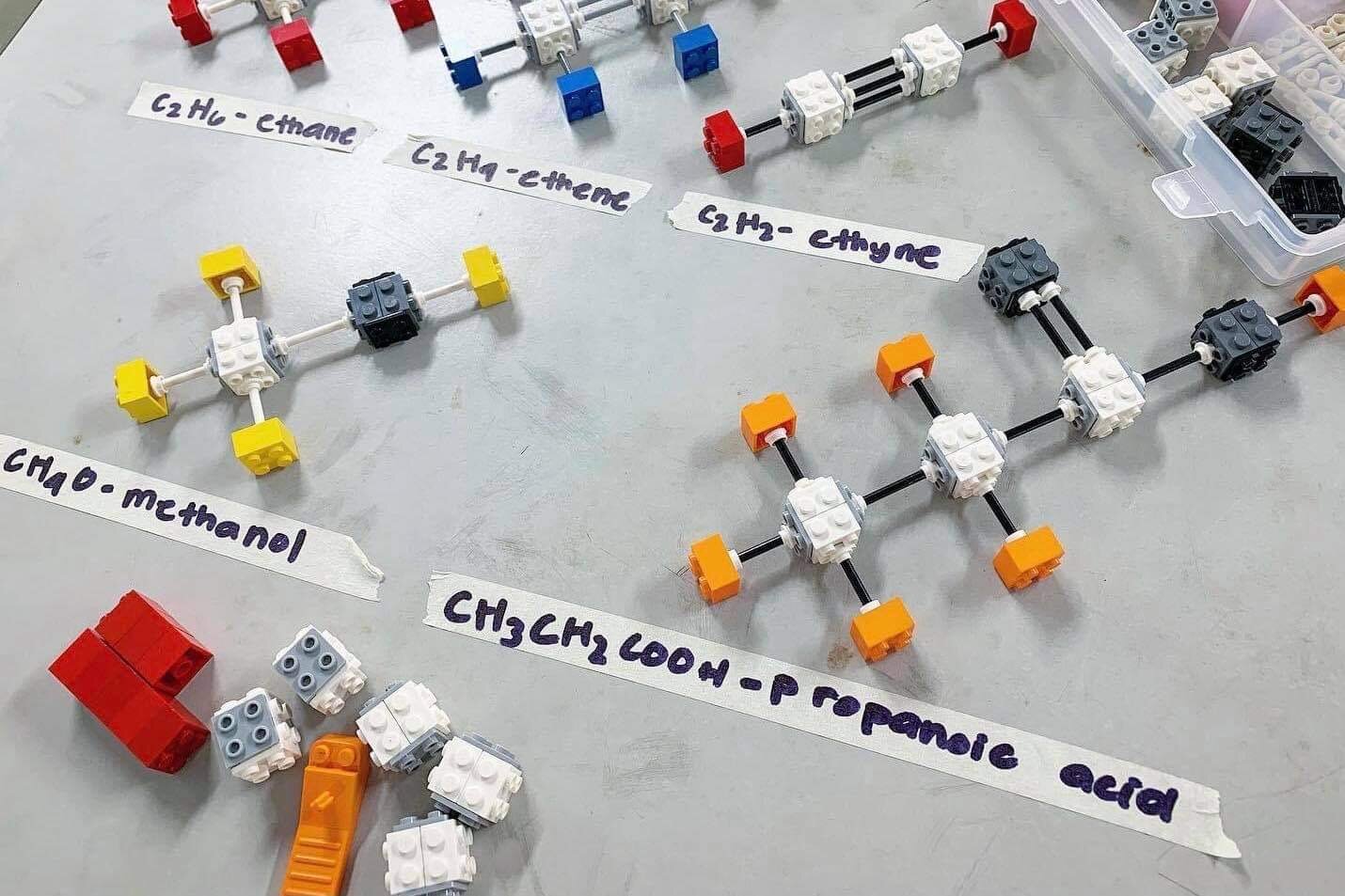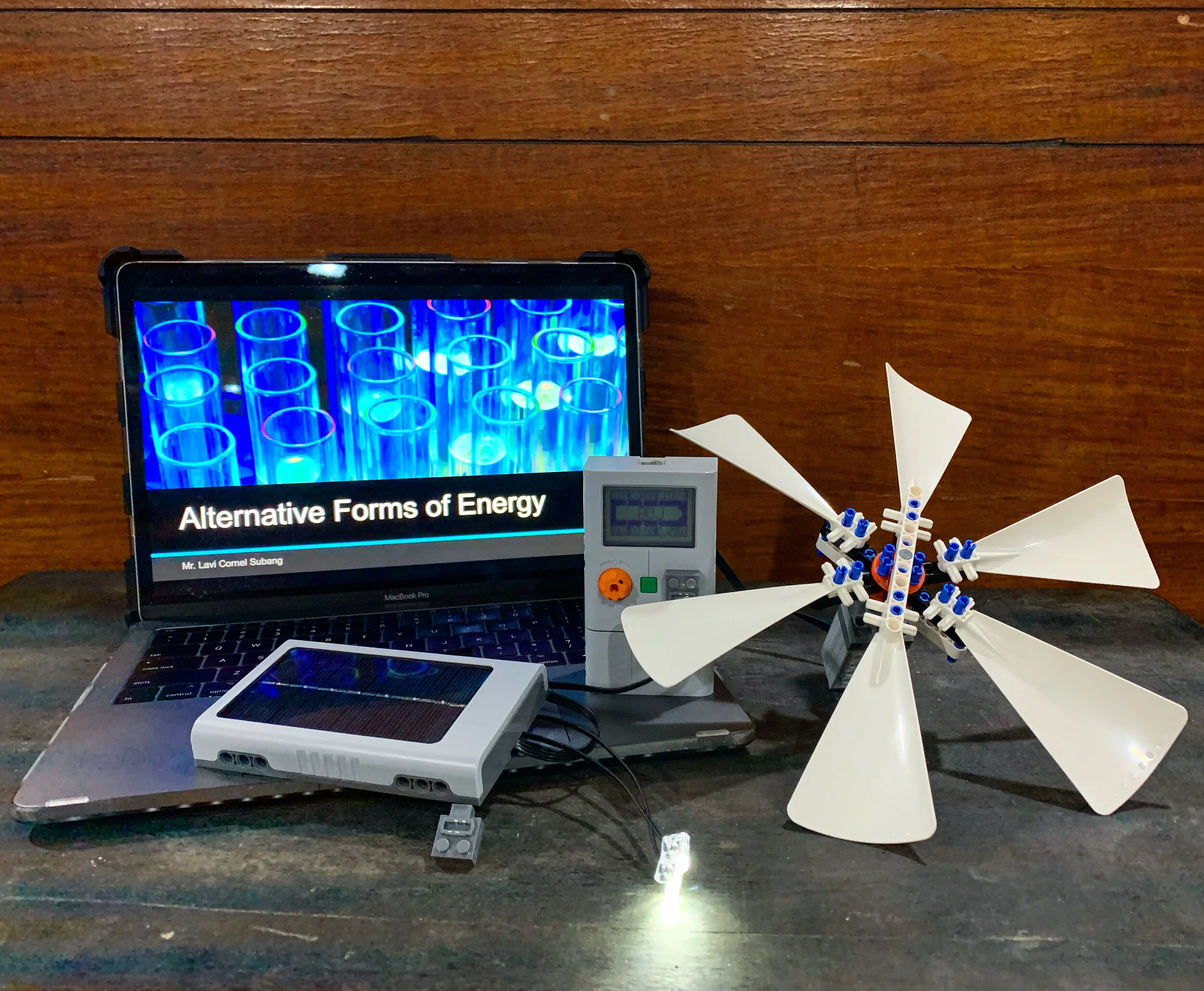Teaching Chemistry with LEGO
/Teaching is not an easy task. Having been a teacher myself, I know how hard it is to be in front of students and to get them to listen. Plus, it takes a lot of time and effort to prepare lesson plans. Teaching is truly a profession that is not for the faint-hearted!
This is why I appreciate and admire teachers who go beyond the norm and not only teach their students, they make learning FUN. I am privileged to have such a friend, Lavi Subang, who educates and entertains his students in the Philippines by incorporating LEGO into his chemistry lessons.
Lavi and I had a long talk about LEGO, chemistry, and teaching:
Inez: Please tell us your LEGO story. How did you start? Any dark ages? How did you become an AFOL?
Lavi: When I was five years old, as a pasalubong (gift) from the US, my Lola (grandmother) gifted me my first LEGO set. It was 6969 - Celestial Stinger. I don't know where my original set is now, but a few years ago I bought the same set as part of my current collection. During elementary and high school, I wasn’t really into LEGO as I was into playing with other toys. However, during my second year in the Philippine Science High School, I encountered LEGO Mindstorms as part of a robotics elective there. Unfortunately, I wasn’t able to get into that elective, but I was able to buy the same set two years ago... Redemption!
I became an AFOL sometime in college when a major LEGO distributor in the Philippines held a warehouse sale in December 2013. I spent an entire month’s allowance on LEGO sets. It was then that I started making my own designs, despite the limited number of pieces that I had back then. After college, I joined AFOL groups in the Philippines, bought more and more pieces, and participated in different LEGO conventions and exhibits. My current designs usually revolve around anime and mech builds.
Death Stinger Zoid by Lavi Subang
Inez: How does a busy chemistry teacher make time for LEGO?
Lavi: I often try to finish all my tasks as fast as I can, but without sacrificing quality, to make time for LEGO. Unlike when I was still studying for my Master’s degree, I definitely churned out way fewer MOCs when I started teaching. Also, breaks and special holidays are LEGO days, haha! On most days, I use BrickLink’s Studio 2.0 to make LEGO designs due to space constraints in my condo because of my WFH set-up.
Inez: You mentioned your Master’s degree. I know your thesis focused on the use of LEGO as a teaching tool. Could you summarize your thesis for us?
Lavi: My thesis is entitled “THE USE OF LEGO KITS AS MANIPULATIVES, THE ACADEMIC PERFORMANCE, AND THE SPATIAL ABILITY OF GRADE 9 – SCIENCE STUDENTS.” My thesis aimed to determine the effects of LEGO kits on the academic performance and spatial ability of Grade 9 science students, and to compare it against the traditional model kit being used in teaching chemistry - the ball and stick model.
The results of my study showed that although there were significant differences between the academic performance of the students before and after the activity, there was no significant difference between the effects of the LEGO kits and the traditional ball and stick model to the academic performance and spatial ability of the students. It can be inferred, thus, that the LEGO kits prepared for the study were as effective as ball and stick models as teaching tools in the classroom.
Chemistry LEGO kit put together by Lavi for his thesis.
Inez: That’s such a cool premise for a study! What inspired you to incorporate LEGO into your thesis?
Lavi: When I entered my Master’s degree program, I already had in my mind that I wanted to use LEGO for my thesis. First, because LEGO pieces are more accessible than the traditional ball and stick model, and second, I thought kids would find it more enjoyable to use something that they are already used to in learning their chemistry lessons.
Various chemical compounds depicted in LEGO by Lavi Subang.
Inez: How do you apply your thesis findings to your profession?
Lavi: Before the pandemic, I had plans to expand the kits that I prepared to other chemistry lessons. With the online class set-up, I was only able to use the kits for class demos and module print-outs. But, to my surprise, my students who had LEGO bricks at home used their pieces for their online submissions on chemical bonding, further proving that LEGO is really accessible for the students. For this school year, if possible, I plan to incorporate BrickLink’s Studio 2.0 into my modules.
Using Stud.io 2.0 to create models of chemical compounds. Lavi calls the middle brick his “Central Atom” brick, which is his own design.
Inez: Do you have a favorite molecular model that you’ve constructed?
Lavi: None in particular. One of the limitations of using LEGO as a chemistry modeling kit is the lack of flexibility. Maybe in the near future, LEGO may release more flexible pieces, and I will be able to make models of organic compounds by then.
Carbon compounds depicted as structural diagrams and as LEGO models.
Inez: How do your students react to the use of LEGO in their lessons?
Lavi: During face-to-face classes before the pandemic, my students were ecstatic every time I brought LEGO to the classroom. I used to bring my NASA sets, LEGO Mindstorms, and other LEGO Education sets to class, and they had fun during our sessions.
Lavi used Lego Education Set 9688 to demonstrate Wind Energy and Solar Energy to his students.
Inez: Do you have any advice for educators looking to incorporate LEGO into their lessons?
Lavi: First, simpler is cheaper. The simpler your LEGO-based learning material design is, the cheaper it is to reproduce, haha! Second, context is key. Before making any LEGO-based learning material, always check first if your students will have enough access and knowledge about the pieces and bricks that you will be using. Lastly, think outside the brick. Treat your learning material as a MOC. Be as creative as you want to be, but don’t forget the context of your lessons for your students.
Inez: I wish I used LEGO for my organic chemistry projects back in college… maybe I’d have gotten better grades if I did! Thanks for the great talk, Lavi!
Do you use LEGO in your profession? We would love to hear how you incorporate LEGO in your day to day! Let us know in the comment section below.
Do you want to help BrickNerd continue publishing articles like this one? Become a patron to show your support, get early access, exclusive swag and more.























